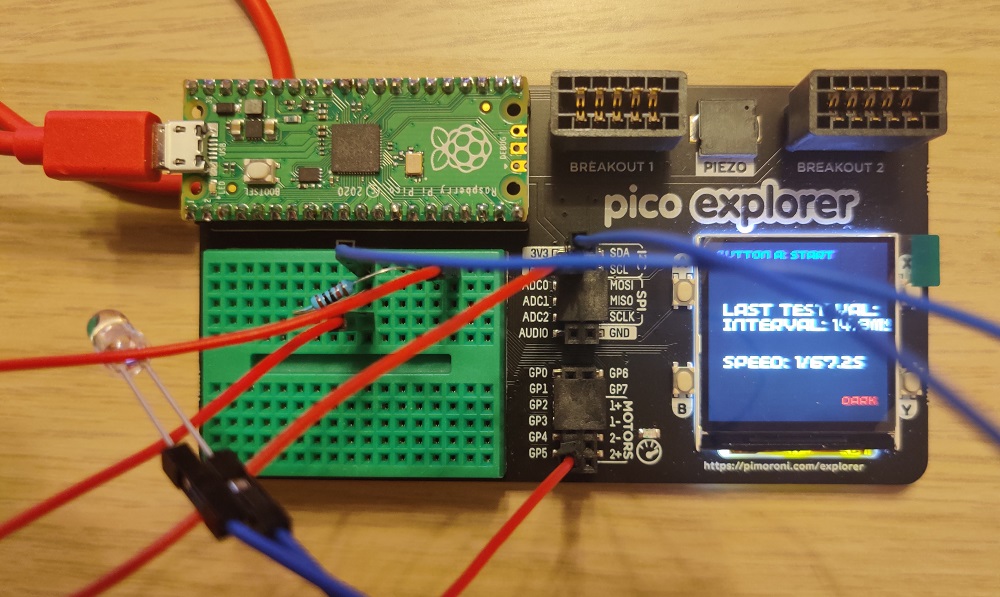- Messages
- 2,122
- Name
- Brian
- Edit My Images
- No
I've been working on an Isolette that I picked up cheap off eBay. It's shutter was firing, but I wanted to test it with a bit more accuracy. I had a play today with the new Raspberry Pico. For those who like to play around with electronics, it's more like and Arduino than a Raspberry Pi - it's a small standalone computer that had a lot of inputs and outputs to connect to sensors, electronics, motors etc. It's also cheap - it costs about £4 and easy to programme in Python.
So, a few hours learning how to do some things, a phototransistor and a resistor later and I have a shutter tester that seems to work up to at least 4kHz. The picture and video below show it mounted in a board that includes a screen and some other nice things because I'm testing the Pico for work (and costs about £20, so still reasonably prices), but the whole tester could be built on breadboard and give the results back to a PC or laptop without needing this extra hardware. Oh, and the shutter seems close enough for a 60-something camera that I'm not going to open it up!
Pic:

And there's a video of it in action here:
Shutter Tester with Raspberry Pico
So, a few hours learning how to do some things, a phototransistor and a resistor later and I have a shutter tester that seems to work up to at least 4kHz. The picture and video below show it mounted in a board that includes a screen and some other nice things because I'm testing the Pico for work (and costs about £20, so still reasonably prices), but the whole tester could be built on breadboard and give the results back to a PC or laptop without needing this extra hardware. Oh, and the shutter seems close enough for a 60-something camera that I'm not going to open it up!
Pic:

And there's a video of it in action here:
Shutter Tester with Raspberry Pico



